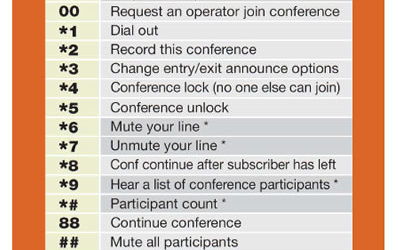The following is a guest post from Dr. Ken Hudson who is one of the most creative thinkers, speakers and consultants in Australia (and beyond!). We published a video interview he had done for ABC News, Australia a couple weeks ago on a post about overcoming meeting fatigue. That led us to reach out and ask Dr. Hudson to give his thoughts on creative ways to futher address the problem and improve the productivity of business meetings. Enjoy, and give these suggestions a go!
Meeting after meetings are a fact of life for anyone that works in a medium to large organization.
In fact, in many businesses that I consult to, it’s not unheard of for leaders to spend 60-80% of their time in meetings.
This is not to suggest that meetings are a waste of time — far from it. Meetings are an essential tool and process to discuss, collaborate and explore various issues, problems and decisions.
But with the pressure on delivering results in limited time any effort to enhance the effectiveness of meetings would be welcome by most managers.
Here are 3 suggestions to help you improve the productivity of meetings.
1. Break the meeting habit
For many leaders the first port of call whenever there is an issue is to automatically call a meeting.
meeting.
It does not occur to them that there may be other ways to handle a problem. For example, perhaps a phone call, email or a quick face-to-face 10 minute session might be a better approach.
Like smoking, the meeting habit is difficult to break.
So the starting point in breaking this habit is to ask yourself, why am I calling this meeting? Is there another way to handle this problem or issue?
If the answer is yes then whom do I need in the room to help make a decision or solve the problem or move the issue forward?
Only then should a meeting be called.
Improving productivity is one of the big issues on most leaders’ priorities.
2. Introduce the 45-minute meeting
 That’s right — every meeting from now on has to be 45 minutes or less (no if’s or buts).
That’s right — every meeting from now on has to be 45 minutes or less (no if’s or buts).
The 45-minute meeting replaces the 1-hour version.
In our experience with the division of a large-scale service company we tried to find out why people were constantly late for meetings, which is a major cause of wasted time and frustration.
We discovered that having back-to-back hour long meetings in different rooms meant that it was physically impossible to get from one place to another in time. In addition it left no time to go to the bathroom, make any urgent calls, and prepare for the next meeting or check emails. The other reason was cultural — it simply became accepted to be late for a meeting.
Imagine all the time wasted waiting for people to arrive before a meeting could start across an entire business in a day, a week or over a year. Imagine the costs involved in having expensive people twiddling their thumbs.
Our solution was simple. We introduced the 45-minute meeting along with some other basic meeting guidelines (e.g. every meeting must have a purpose, arrive on time, be prepared and be fully present).
The results were immediate.
We found that whatever could be covered in a 1 hour meeting could be covered in 45 minutes. We had thus saved 25% of a busy manager’s time. In addition, meetings began on time; people were better prepared, refreshed and focused.
If our results were any guide I would encourage every leader to give the 45-minute a go. It is both a practical and symbolic way of working smarter, faster and being more productive.
3. Start Blitzing
Another bad habit is that whenever an issue or problem comes up in a meeting the first reaction is to call another meeting. But why? If all the relevant people are in the room why waste another hour when you can Blitz the problem in literally minutes.
reaction is to call another meeting. But why? If all the relevant people are in the room why waste another hour when you can Blitz the problem in literally minutes.
Ideas Blitz is the tool of Speed Thinking developed by me to help time-poor leaders and managers to be more creative and productive (for more information visit: www.ideasblitz.com).
It starts with everyone working by themselves trying to generate 9 ideas or solutions in 2 minutes to the challenge at hand. This gets people thinking for themselves and creates an increased number of diverse ideas.
The next steps are to try and enhance each other’s ideas, connect them into bigger solutions and finally evaluating them.
The last step in an Ideas Blitz is to develop an action plan for the best ideas. You can follow the 5 steps (i.e. start, enhance, connect, evaluate and action) in this order or jump around or just do a few of the steps (e.g. start then evaluate).
The beauty of this speed thinking approach is that with a little bit of practice most everyday problems can be solved in minutes not hours. The simple act of thinking quickly also stops people procrastinating, filtering their amazing ideas and generates a sense of momentum.
Meetings have been around for hundreds of years. But in a fast-moving, time-poor world we need to update and reinvent them.
Following these suggestions will help you and your team to become more productive, innovative and feeling more energized.




0 Comments